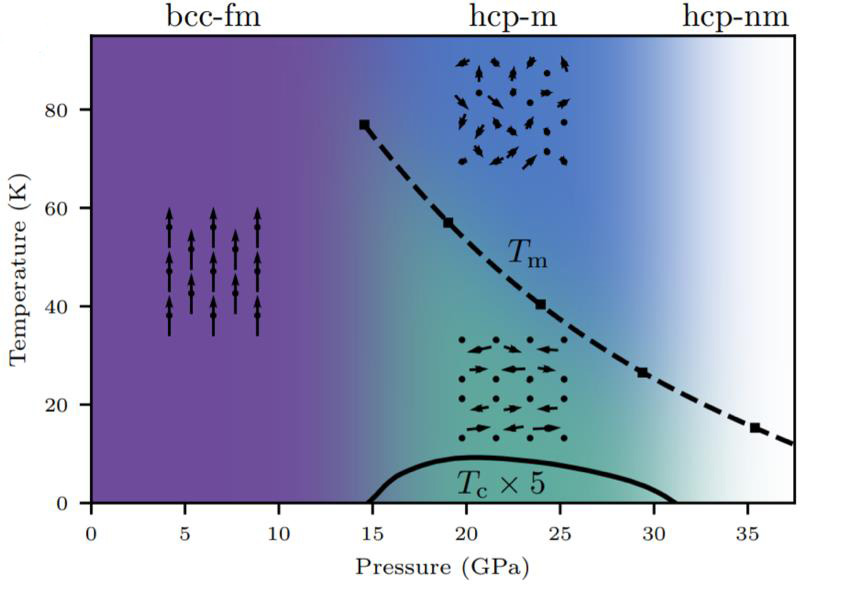A team of researchers from IMPMC in collaboration with GALAXIES beamline at SOLEIL and D20 at ILL deliver new insight on the controversial magnetic state of the high-pressure polymorph of iron. The researchers show experimentally that there are magnetic moments without any long-range magnetic order and theoretically predict an exciting new magnetic phase. These results could play an important role in the unexplained superconductivity in high pressure iron and for planetary science. The article has been published in Proceedings of the National Academy of Sciences of the United States of America.
Iron has long been studied under extreme pressure and temperature conditions due to its geophysical significance, since it and its alloys compose the majority of the Earth’s core. Iron is the prototypical ferromagnet and crystallizes in a cubic structure at ambient conditions. Upon increasing the pressure, iron undergoes a structural transformation to a hexagonal structure around 15 GPa. This high-pressure phase, known as ε-iron, was discovered in 1956 and since then it has been studied at increasingly high pressures and temperatures. Nonetheless, the magnetism of ε-iron has been debated for decades: there is disagreement between theory, which predicts magnetism, and experiment, which has failed to detect it so far. The researchers decided to tackle this old problem from both directions, combining advanced experimental and theoretical techniques.
The researchers used x-ray emission spectroscopy to first study the local magnetic properties of the iron under high pressure. Their improvements over past techniques allowed them to clearly show that ε-iron continues to have a magnetic moment. The magnetic moment gradually decreases in strength and disappears around 30 GPa. This 15—30 GPa pressure region coincides with the region where iron exhibits superconductivity, strongly suggesting that magnetic fluctuations play a role.
The researchers further performed neutron powder diffraction study on ε-iron at extreme conditions (up to 20 GPa). Neutron powder diffraction is a direct probe of the magnetic structure in materials. The researchers found no magnetic order and were able to put upper limits on the magnetic moment which are in strong disagreement with theory and their x-ray emission spectroscopy results.
Using advanced theoretical techniques, based on density functional and Monte Carlo theories from first principles, the researchers were able to predict a new magnetic structure where not only the magnetic moments fluctuate in direction from an atomic site to another but also could vary in magnitude. This new phase, an extreme manifestation of the magnetic itineracy postulated by Moriya a long time ago, has been called a “spin smectic” state, since it lacks long-range order, being consistent with their experimental studies.
The spin smectic phase could play an important role in the unexplained superconductivity in ε-iron. This phase is also important for planetary physics since it exists in the pressure range corresponding to the interior of small rocky planets. These results are published in the Proceedings of the National Academy of Sciences of the United States of America.

Fig 1: Schematic phase diagram of iron. The ambient ferromagnetic cubic phase is shown in purple. The high-pressure form ε-iron, which forms a hexagonal structure, is shown in blue/green for magnetic phases and white for non-magnetic phases. The researchers’ calculations predict that the disordered moments (blue) form a spin-smectic state (green) below a critical temperature Tm, which may be related to ε-iron’s superconductivity (Tc dome shown).
